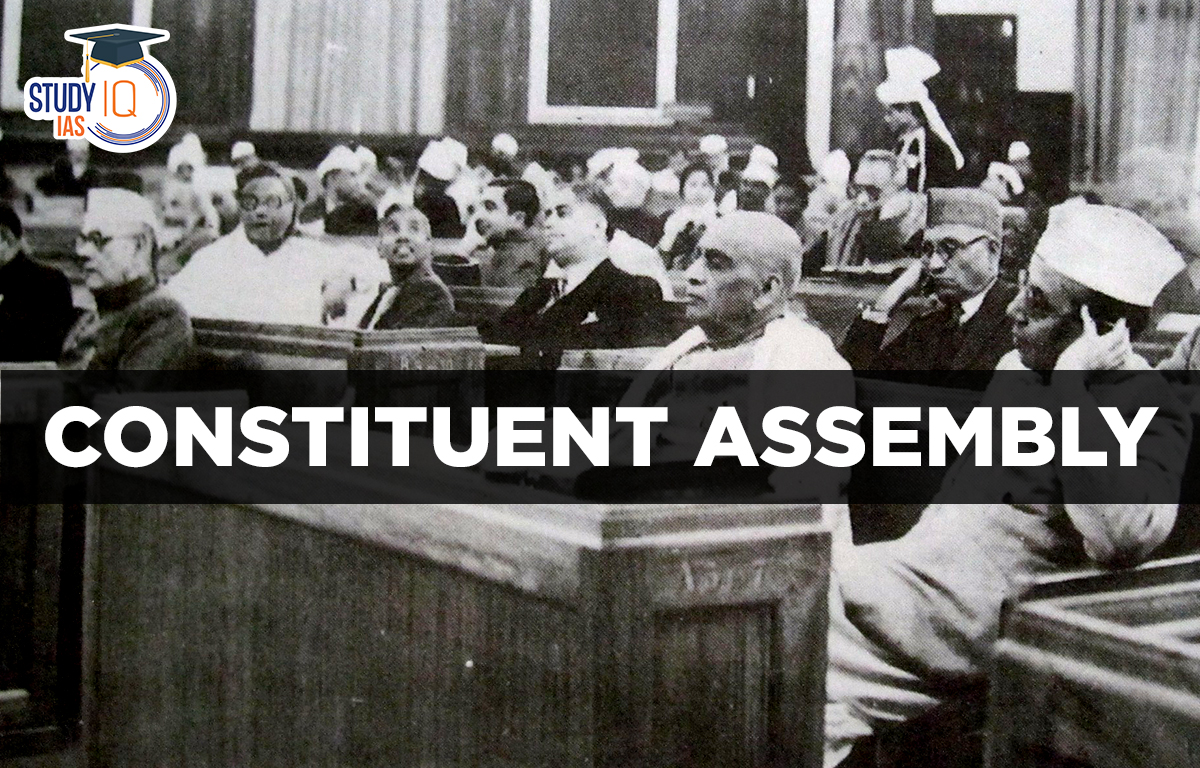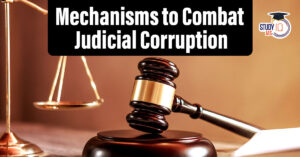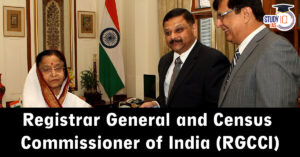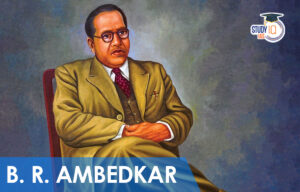Table of Contents
Constituent Assembly
The Constitution of India is the highest law of the country and outlines the powers and duties of the government. Parliament cannot override the Constitution because it is supreme, having been created by the Constituent Assembly led by Dr. B.R. Ambedkar. Dr. Ambedkar famously stated, “Our struggle is not for wealth or power, but for freedom and the reclamation of human personality,” summarizing the purpose of India’s fight for independence. The Constituent Assembly took two years, eleven months, and seventeen days to draft the Constitution for Independent India. It held eleven sessions over 165 days, with 114 days focused on the Draft Constitution.
Members were chosen through indirect elections by Provincial Legislative Assemblies, following the Cabinet Mission’s plan. This included:
- 292 members elected from the Provincial Assemblies,
- 93 members from the Indian Princely States, and
- 4 from Chief Commissioners’ Provinces, totaling 389 members.
However, after the partition under the Mountbatten Plan on June 3, 1947, a separate Constituent Assembly was formed for Pakistan, reducing the Assembly’s membership to 299.
Read More: Salient Features of Constitution of India
Constituent Assembly of India Idea
In 1934, M.N. Roy first proposed the idea of a constituent assembly, which the Congress Party officially adopted as a demand in 1935. The British accepted this proposal in the August Offer of 1940. Following the Cabinet Mission plan of 1946, elections were held to form the constituent assembly, with members elected indirectly by provincial assembly members using a single transferable vote method for proportional representation. The assembly was established to write a constitution for independent India.
Read More: Preamble of Indian Constitution
Chairman of Constituent Assembly
The Assembly became the first Parliament of India which was chaired by Dr Rajendra Prasad for performing constituent functions and for the legislative functions it was chaired by GV Mavlankar it continued to till the constitution was made.
| Committees | |
| Drafting Committee | Dr. B R Ambedkar |
| Union Constitution Committee | Jawaharlal Nehru |
| Union Powers Committee | Jawaharlal Nehru |
| States Committee | Jawaharlal Nehru |
| Steering Committee | Dr. Rajendra Prasad |
| Rules of Procedure Committee | Dr. Rajendra Prasad |
| Provincial Constitution Committee | Sardar Vallabhbhai Patel |
| Advisory Committee on Fundamental Rights, Minorities and Tribal and Excluded Areas: |
|
Read More: Important Articles of Indian Constitution
President of the Constituent Assembly
The first meeting of the constituent assembly was held on 9th December 1946, Dr. Sachchidananda Sinha was appointed as the temporary chairman of the Constituent Assembly meeting which was attended by 211 members. Later Dr Rajendra Prasad was elected as the President and H.C. Mukherjee and V.T. Krishnamachari were elected as the Vice-President.
| Chronology: |
|
Read More: Fundamental Rights of Indian Constitution
Working of The Constitutional Assembly
The working of the Constituent Assembly started with the historic ‘Objective Resolution’ presented by JL Nehru it laid down the fundamentals and the philosophy of the structure of the constitution. With a vision to maintain peace worldwide and ensure the welfare of mankind, the Objective Resolution proposed to keep intact the sovereignty and integrity of the nation.
The Assembly also helped in the adoption of- the national flag, national song, and national anthem on 22nd July 1947, and 24th January 1950, ratified the membership of India in the commonwealth (May 1949), also elected Dr. Rajendra Prasad as its first President.
Read More: Directive Principles of State Policy
Speaker of Constituent Assembly
In 1946, GV Mavalankar was elected as the Speaker of the Central Legislative Assembly he remained in this post till August 15, 1947. With the dissolution of the Central Legislative Assembly, the Constituent Assembly was formed. GV Mavalankar became the speaker of the constituent assembly on November 17th, 1947.
The first Lok Sabha was constituted in 1952 and GV Mavalankar was elected as the first speaker of Lok Sabha.
Read More: Pitt’s India Act 1784
Constituent Assembly Adopted the Constitution of India
In the last meeting of the Constituent Assembly on January 24, 1950, members signed two copies of the Constitution (one in Hindi and one in English). “Jana Gana Mana” was adopted as the national anthem, and the first two verses of “Vande Mataram” were adopted as the national song. The original Constitution is beautifully handwritten and decorated by artists from Shantiniketan, including Beohar Rammanohar Sinha and Nandalal Bose. After nearly three years of effort, the Constitution was adopted on November 26, 1949, featuring a Preamble, 395 Articles, and 8 Schedules. On that day, some Articles (5 to 9, 379, 380, 388, 392, and 393) came into force, while the rest took effect on January 26, 1950. With the adoption of the Constitution, the Government of India Act 1935 and the Indian Independence Act 1947 were abolished. Today, the Indian Constitution has 448 Articles, 25 Parts, and 12 Schedules.
Note: India got its independence from the rule of the British in 1947, but became a republic in 1950. Although India was recognized as a separate nation, it was still following the British constitution and acknowledged the British Monarch. The reason behind adopting the republic in 1950 was to glorify the Indian National Congress declaration of 26th January 1930 as ‘Independence Day’, when the Declaration of Complete Independence was officially promulgated.


 Mechanisms to Combat Judicial Corruption...
Mechanisms to Combat Judicial Corruption...
 Registrar General and Census Commissione...
Registrar General and Census Commissione...
 Ambedkar Jayanti 2025: Biography, Legacy...
Ambedkar Jayanti 2025: Biography, Legacy...





















